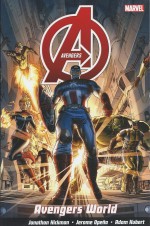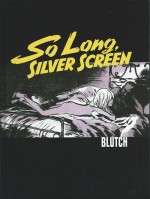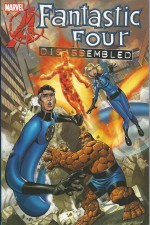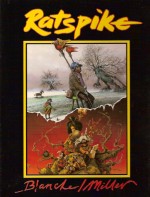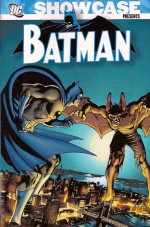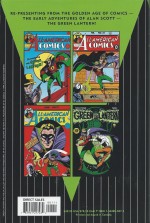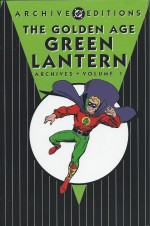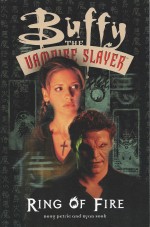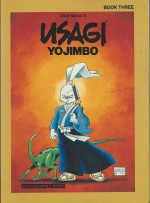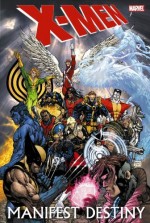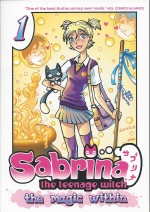
By Tania del Rio & Jim Amash (Archie Comics Publications)
ISBN: 978-1-936975-39-6
Sabrina the Teen-Age Witch debuted in Archie’s Madhouse #22 (October 1962), created by George Gladir & Dan de Carlo as a throwaway character in the gag anthology which was simply one more venue for comics’ undisputed kings of kids comedy. She instantly proved popular enough to become a regular in the burgeoning cast surrounding the core stars Archie Andrews, Betty Cooper, Veronica Lodge and Jughead Jones.
By 1969 the comely enchantress had grown popular enough to win her own animated Filmation TV series (just like Archie and Josie and the Pussycats) and graduated to a lead feature in Archie’s TV Laugh Out before in 1971 finally winning her own title.
The first volume ran 77 issues from 1971 to 1983 and, when a hugely successful live action TV series launched in 1996, an adapted comicbook iteration followed in 1997. That version folded in 1999 after a further 32 issues.
Volume 3 – simple titled Sabrina – was based on new TV show Sabrina the Animated Series. This ran from 2000 to 2002 for 37 issues before a back-to-basics reboot saw the comicbook revert to Sabrina the Teenage Witch with #38, carefully blending elements of all the previous print and TV versions. A creature of seemingly infinite variation and variety, the mystic maid continued in this vein until 2004 and #57 wherein, acting on the global popularity of Japanese comics, the company boldly switched format and transformed the series into a manga-style high school comedy-romance in the classic ShÅjo manner.
Written and drawn by Tania del Rio and inked by Jim Amash, this canny supernatural soap ran until #100 in 2009. The series folded four issues later.
An incredibly successful experiment, the beginnings of the manga saga were collected in a trade paperback as Sabrina – the Magic Revisited and issues #58-67 were later added to Archie Comics’ online library as digital editions. Now with the release of this black-&-white digest sized US tankÅbon edition, the concept comes full circle…
Collecting Sabrina the Teenage Witch #58-68 from 2004-2005, this vibrant slice of wild whimsy opens with ‘Entering the Magic Realm’ – a fond remembrance from del Rio – and a handy character guide before issue/chapter 1 introduces us to a different kind of Winsome Witch in ‘Spellfreeze’…
Sabrina is just a typical Greendale High School girl. She lives with her Aunts Hilda and Zelda Spellman, has a pet cat Salem and barely conceals a crush on childhood pal Harvey Kinkle. The cute but clueless boy reciprocates the affection but is far too scared to rock the boat by acting on his desires.
Sabrina is also an atypical witch: living in the mortal world and passing herself off as normal. To make up for this peccadillo she has to attend Charm-School in the “Other Realm†to learn all about her heritage, powers and especially the rules of magic/mortal interaction.
Her life takes a complicated turn when a cute new boy enrols at Greendale. Shinji Yamagi is gorgeous and instantly popular – but he’s also a young warlock from Sabrina’s class at her other school. He’s on Earth to clandestinely study for a Charm-School project but soon finds it hard to keep his gifts secret.
Moreover he’s soon turning Sabrina’s head and she can’t decide which boy she likes best…
Complicating the mess is mortal Amy Reinhardt – a spiteful rival for Harvey’s affections who will do anything to upset Sabrina and sharp enough to instantly realise that she can use Shinji to further her ambitions…
Shinji is having real problems not using his magic to ease the tedious drudgery of mortal life and is soon openly flouting the rules just to make himself popular. Knowing that eventually somebody will realise he’s not simply performing tricks – and perhaps just a little jealous – Sabrina determines to stop him…
Salem is not just an ordinary cat; long ago he was Salem Saberhagen: the most powerful warlock of all. After trying to conquer the world he was imprisoned in a cat’s body where he could do no magic, but he can still talk and his rehabilitation is very grudging. He doesn’t need much urging to guide Sabrina to the Magic Realm where she can obtain a spell to neutralise Shinji’s powers.
It’s quite complex though, and the junior conjuress gets it badly wrong. Rather than freezing the warlock’s magic the spell turns Shinji’s body to ice.
Horrified at her mistake Sabrina confesses all to her Aunts and learns that only a kiss can turn him back to normal, but she’s slowly becoming aware that for all his arrogant faults, she really, really likes Shinji and doesn’t fully trust herself…
Chapter 2 has a sporting theme as Sabrina tries to get Harvey to make his move. Although a star of the basketball squad, the wishy-washy boy is badly fumbling the school tradition of bestowing a team ribbon upon the girl of one’s dreams.
Sabrina is cruelly teased by Amy who tells her Harvey has already offered her his silken favour in ‘Blue Ribbon Blues’ and the distraction cannot come at a worse time. There’s a big test coming up in Charm-School – it’s the time when students have to make their first flying broomstick – and a bad result could affect her whole life…
Unbeknownst to her Shinji too is feeling the power of attraction. In ‘Councils and Concerts’, Aunt Hilda is lobbying to be elected to the ruling Council of the Magic Realm and needs no embarrassing distractions, but that hope is doomed after Sabrina is summonsed by the fearsome Galiena, Czarina of Decree to explain her recent rule-breaking and magical abuse of the adults-only spellfreeze incantation, not to mention riding a broom without a license…
As the depressed teen talks things over with best friend and eldritch classmate Llandra da Silva, Shinji appears and asks her on a date to see the hip, magic band Oberon. The wayward warlock has had plenty of run-ins with the Council though, and advises her just to ignore them, even as Llandra warns him not to come between her BFF and poor mortal Harvey…
After the gig, Shinji tries to get Sabrina to join him in another illegal broom flight and they have a blazing row before he ditches her. Humiliated and furious, all she can do is call the aunt she has again let down…
A Halloween party is the setting for ‘The Magic Within’ as troubled Goth girl Gwenevive Ricci arrives in Greendale, a mortal who can somehow make real magic. The brittle human is rather hard to like, but when Salem investigates he finds the secret of Gwenevive’s powers to be a rival someone he’d thought long gone and the soiree turns into a deadly supernatural battle.
More by luck than skill Sabrina saves the world and vindicates herself with the Council, but they might not be so mellow if they realised she had accidentally allowed Gwen to learn her secret…
‘Winter Wallflower’ deals with some of the potential repercussions as witchly wannabe Gwen pumps Sabrina for more information, blithely uncaring that she risks having her mind wiped by the Council. However rebellious Sabrina faces even greater challenges when she finds herself dateless for a school dance. Good old dependable Harvey has asked a cute freshman to the affair, and when Sabrina goes looking for Shinji she sees him in a passionate embrace with Llandra…
This chapter is complimented by a one-page gag strip starring Salem who abuses a present in ‘House Cat!’ before the Sabrina/Harvey/Shinji romantic triangle is dramatically resolved in ‘Cabin Fever’ wherein the kids and Llandra dash off for a winter break in a log cabin (with Aunt Zelda along as reluctant chaperone). However when the boys drive off for provisions they are caught in a killer ice storm and trapped on a mountain.
Soon their seething rivalry for Sabrina causes a confrontation, but after Harvey saves Shinji from death the chastened young magician determines to help Harvey win the girl of his dreams – even if neither of them is sure that’s what he wants…
After another Salem single ‘Here’s Looking at You’, Harvey’s indecisiveness resurfaces during Valentine’s Day. Despite the warlock boy’s every effort, his new mortal pal just cannot summon up the courage to ask Sabrina out. Moreover the frustrated teen Witch knows something’s amiss and has been having nightmares waiting for Harvey to make his move.
Unfortunately Sabrina talks – and enchants – in her sleep and wakes up on February 14th with the power to see ‘Love Connections’ between people and even animals. The teen witch spends the day acting as an unofficial Cupid, bringing together people who don’t realise how close their one true loves actually are, before – unable to handle Harvey’s paralysis – she just gives up and makes the first move herself.
Watching from concealment Shinji is delighted that at last they are together – and cannot understand why his own heart is breaking…
‘Caught on Tape’ deals with another kind of crisis just as Sabrina is finally together with Harvey. Hilda has been elected to the Council as Czarina of Meditation and the entire family has to move to the Magic Realm. The boy is still unaware of her true nature and now she may never see him again…
However when evidence is found of mortal poachers in the Magic Realm, Sabrina’s knowledge of the mundane world enables them to track down unscrupulous crypto-zoologist Atticus Rex and free the fantastic beast he thought would make him a TV sensation.
Realising that they increasingly need contact with Earth, the Council relents and stations Hilda permanently in the human Realm, but even after having his memories wiped the Spellmans have not seen the last of Atticus…
When Shinji’s mortal, toymaker uncle arrives from Japan and sees Sabrina’s cat he copies the creature’s unique appearance and spawns global ‘Salem Mania’. With the cat now on backpacks, apparel, toys, jewellery and every other form of merchandise as the ignominious ‘Mr. Kitty Litter’, the furious former arch-mage alternately plans revenge and how to cash in, with Sabrina otherwise occupied and unable to stop or help him.
Her attention has been diverted by an impossible dilemma: now that she has Harvey, why is she so jealous that Llandra is with Shinji?
This beguiling first collection concludes with a crossover of sorts when Shinji is “discovered†by a fashion agency and briefly becomes a male model. With Sabrina becoming increasingly disenchanted with Harvey, the warlock suddenly goes slow with Llandra and is romantically linked to pop sensations Josie and the Pussycats, but his meteoric career comes to a sudden halt when his bosses demand to see a little too much skin…
Enticing, funny and genuinely enthralling, this witty, fresh take on a classic American icon will delight most fans and readers. With actual human interaction rather than manufactured atom-powered fistfights to hold your attention, it offers women in particular a solid entertaining reason to give comics one more try. Sheer exuberant fun; perfectly crafted and utterly irresistible.
© 2013 Archie Comics Publications, Inc. All rights reserved.

